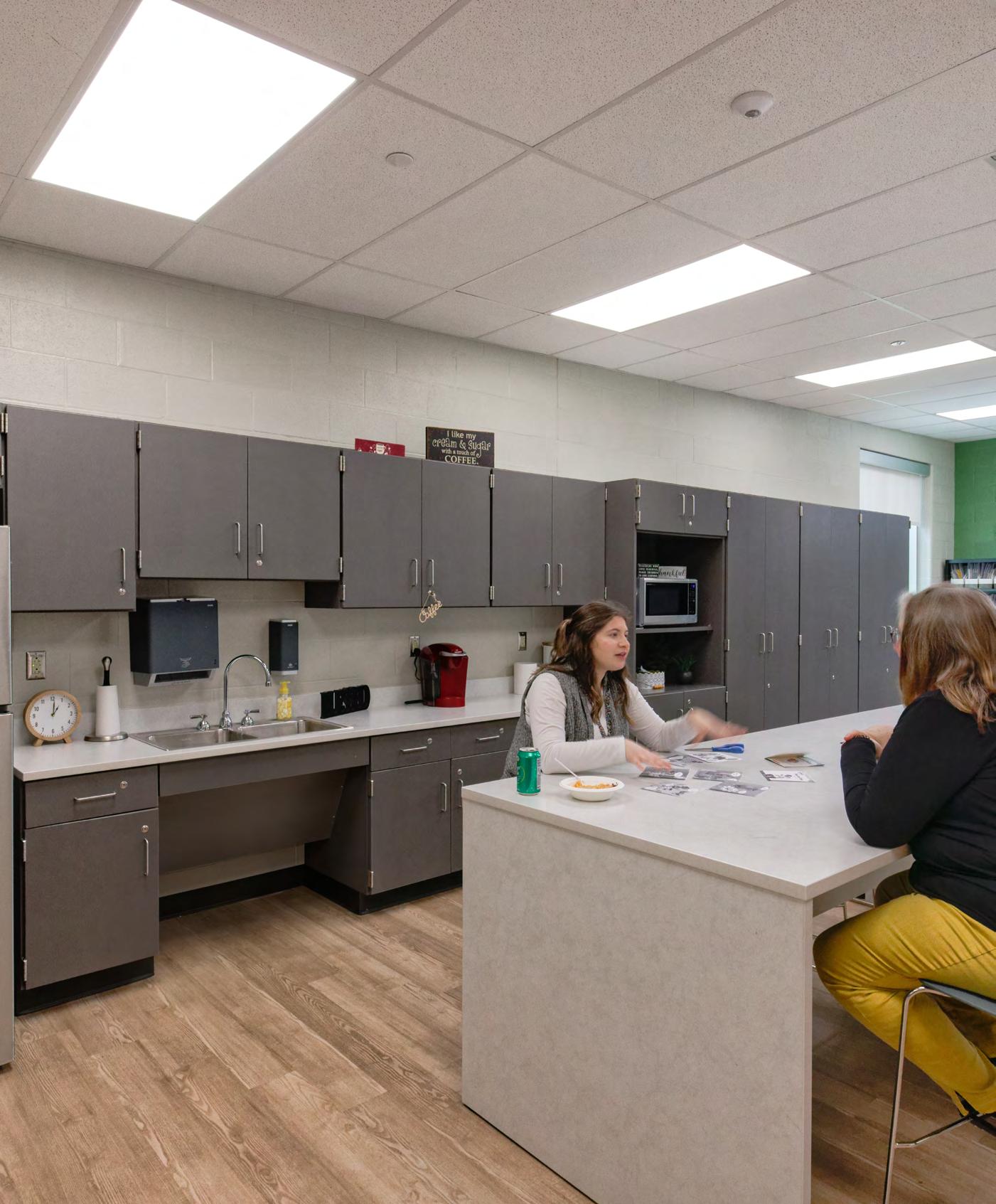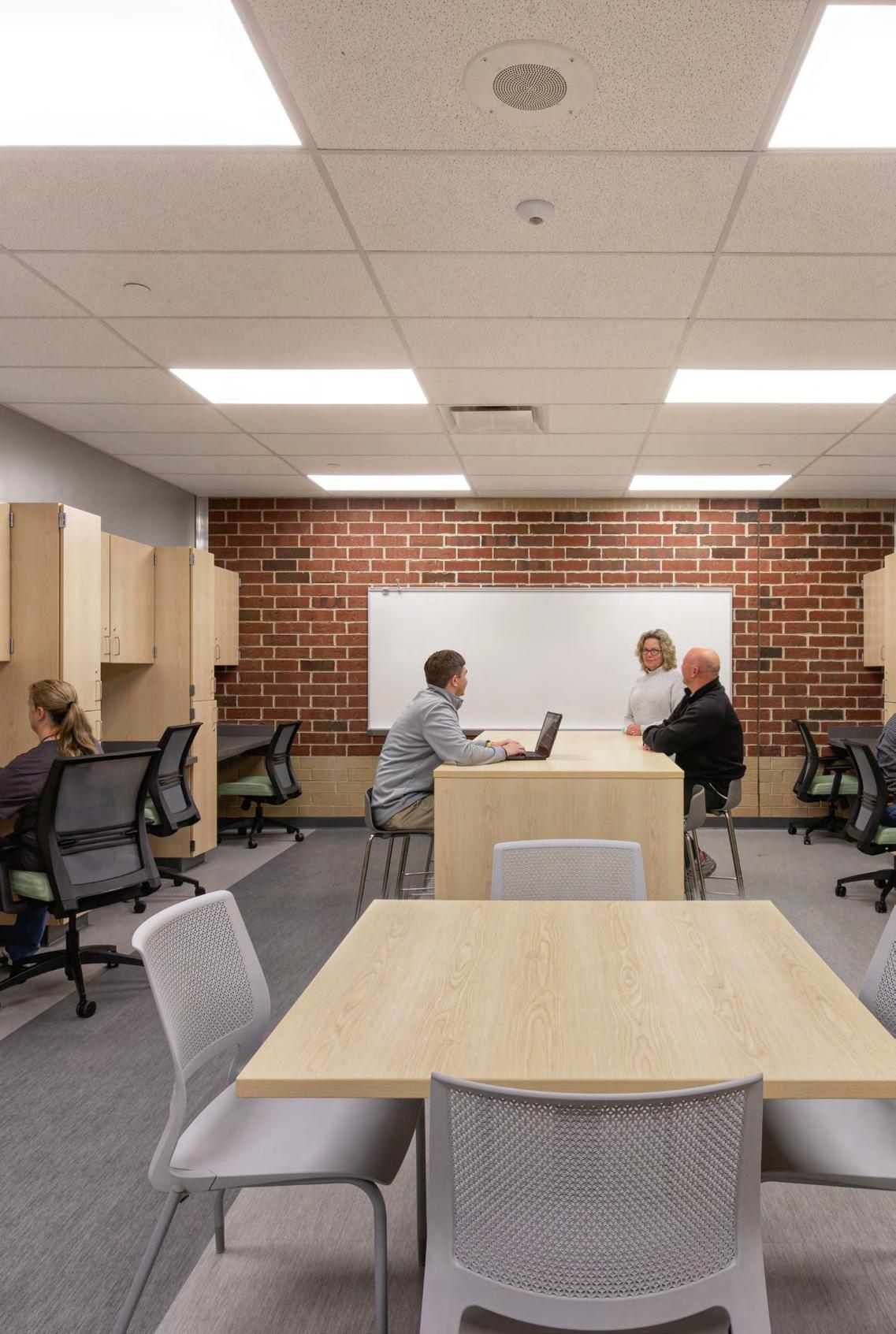Design Guiding Principles






01 | DISTRICT DIRECTION
07 | GUIDING PRINCIPLES
09 | PROFESSIONAL LEARNING NEEDS
11 | DESIGN IMPLICATIONS & SPACE IMPERATIVES
DISTRICT DIRECTION
Monroe Local Schools has created guiding principles for the development of a new high school.
These guiding principles have been established by the district to share its vision and expectations with all development stakeholders. Through a series of project development workshops, school district administrators in concert with Partnerships for Authentic Learning and Leadership and Fanning Howey project executives and managers have developed Design Guiding Principles.
The guidelines presented here will assist and support in the collaborative effort of discovery and design, leading to the development of new a new high school and any future renovations of other buildings in Monroe Local Schools.
Rationale for Guiding Principles for Design
1. PORTRAIT OF A GRADUATE
2. VISION STATEMENT
3. STAFF AND SUDENT FEEDBACK

EMPATHETIC GLOBAL CITIZEN
ADAPTABLE LIFELONG LEARNER
RESPECTFUL COLLABORATOR
PERSISTENT CRITICAL THINKER
PURPOSEFUL EFFECTIVE COMMUNICATOR
PORTRAIT OF A GRADUATE
1. PORTRAIT OF A GRADUATE
Empathetic Global Citizen
Empathetic Global Citizen
Hornets aim to understand others’ feelings, perspectives and experiences to guide their actions in relating to the local and global community.
Hornets aim to understand others’ feelings, perspectives and experiences to guide their actions in relating to the local and global community.
Respectful Collaborator
Respectful Collaborator
Hornets work collectively with others on a shared goal while respecting the needs and contributions of all because we are better together.
Adaptable Lifelong Learner
Hornets work collectively with others on a shared goal while respecting the needs and contributions of all because we are better together.
Hornets strive to continually learn with relentless effort to increase their knowledge and skills for personal and professional fulfillment.
Persistent Critical Thinker
Adaptable Lifelong Learner
Hornets strive to continually learn with relentless effort to increase their knowledge and skills for personal and professional fulfillment.
Hornets identify and evaluate problems and situations to create impactful solutions even in the face of adversity to exceed their limits.
Persistent Critical Thinker
Purposeful Effective Communicator
Hornets articulate their message effectively while being receptive and responsive to others’ input using verbal, nonverbal and written communication skills to understand or motivate others.
Hornets identify and evaluate problems and situations to create impactful solutions even in the face of adversity to exceed their limits.
Purposeful Effective Communicator
Hornets articulate their message effectively while being receptive and responsive to others’ input using verbal, nonverbal and written communication skills to understand or motivate others.
2. VISION STATEMENT
Teaching and learning in the Monroe Local Schools will:
• Be student-focused
• Be experiential and interactive
• Be collaborative
• Use relevant problem solving
• Encourage risk-taking
• Support social-emotional needs
• Promote interpersonal skills
We believe...
• that every student can learn.
• that our student’s basic needs have to be met.
• that growth is a result of taking risks (Risk = Growth).
• that caring relationships must be anchored in honesty, empathy, and respect.
• that work ethic is foundational to being a lifelong learner.
Monroe’s Why
As teachers we do what we do because we....
• Love teaching
• Create global citizens ready for the world
• Get kids excited to learn
• Have the excitement of seeing a student’s eyes open knowing she learned something new
• Prepare kids for an ever-changing future
• Have the honor of being a part of their development as productive and responsible adults
• Show our kids what they can do in a world telling them what they can’t do
• Build their confidence and increase independence
3. FEEDBACK
Staff Visioning
When considering the design of space, teachers were asked to think about the future of work and what it means to be successful both now and in the future. In a brainstorming activity, teachers generated the list to the right. Notice how these align to the work the district has completed on the Portrait of a Graduate. There is significant alignment between the official work of district leaders and what teachers believe is necessary for student success.
Fostering these types of skills in students (both this list along with the explanations found in the Portrait of a Graduate) are more likely to be produced by certain instructional strategies. The types of instructional strategies the district chooses to focus on are directly tied to how students and adults will spend their time and therefore how spaces should be configured.
Needed Skills and Character Traits
• Creative
• Adaptable
• Critical thinking
• Future and forward thinking
• Communication skills
• Self-starter
• Resiliency
• Teamwork
• Collaboration
• Curiosity
• Soft Skills
Conditions of a Best Day of Learning
• Students connect with each other, community, and culture
• Engagement, students excited and interested
• Challenging, productive struggle
• Comforting, personal, relevant
• Feel mastery of the concept
• Inspiring, light bulb moments
• Meaningful and relevant
• Risk taking is ok
• Time to explore
• Feeling valued
• Student-led
• Interactive
• Fun
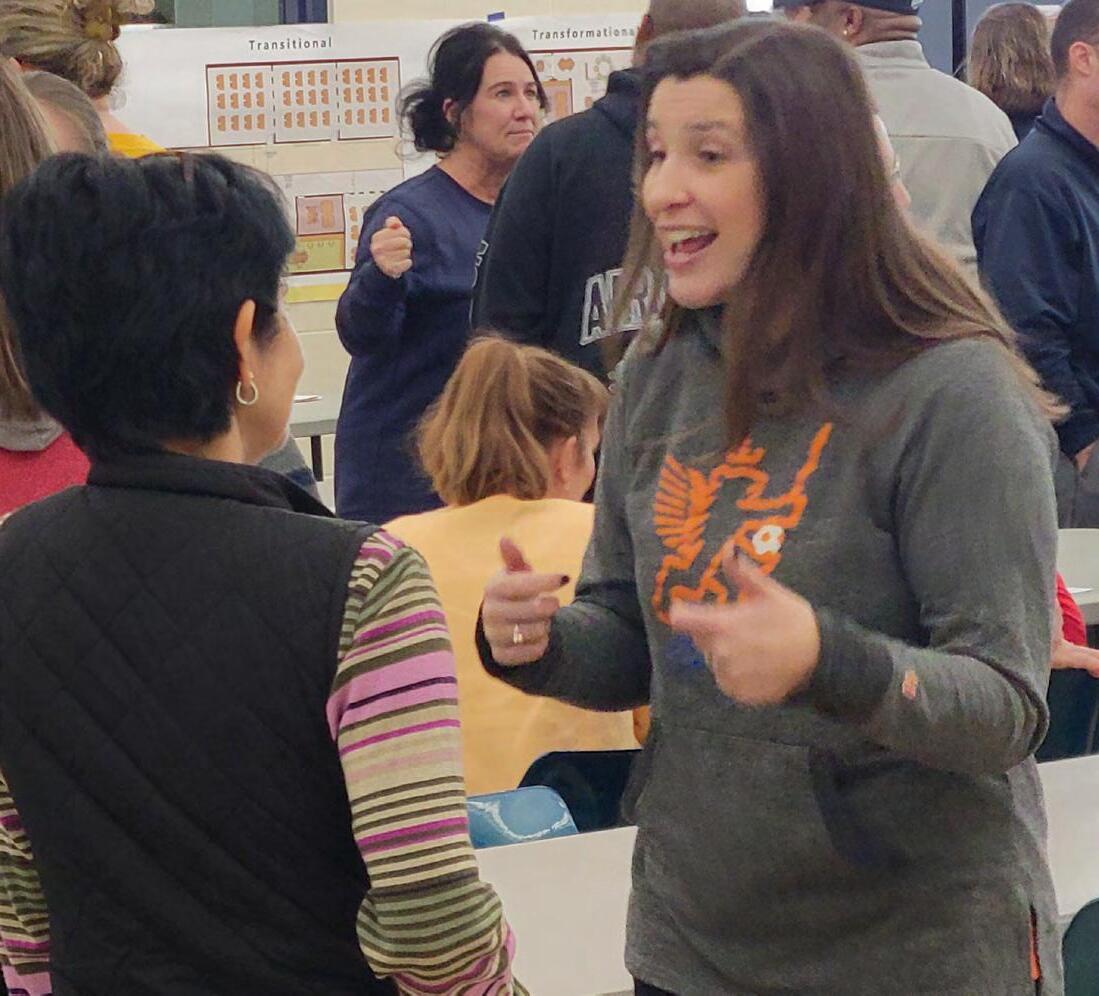
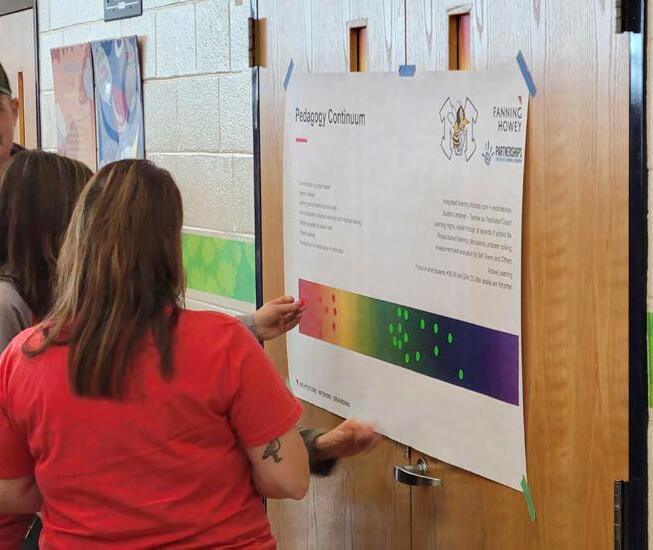
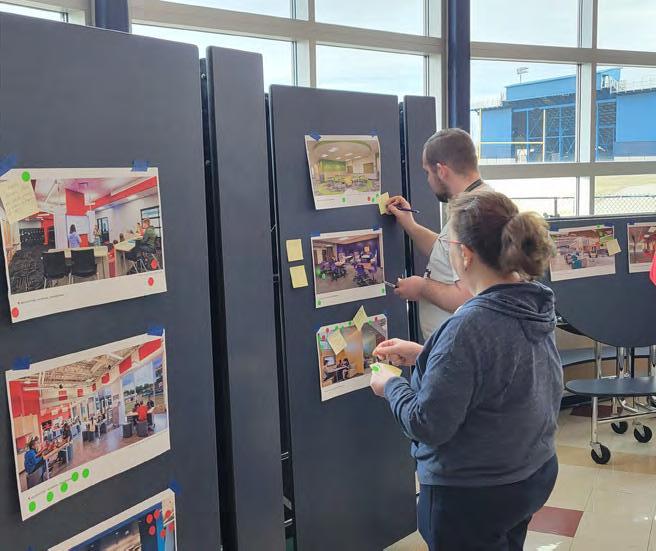
Student Focus Group What Makes Learning Meaningful
• Collaborative peer learning was highlighted as an important social aspect in both academic and extracurricular settings.
• Activities that allow for movement and handson experiences
• Creativity and freedom of choice and expression
• Changing the learning environment - for example, go outside or leave the campus for a learning field trip
• Lessons that are tailored to student interests and relevant to their lives
• The concept for relevance to life after high school is prevalent in their responses
• Individual pacing
What Undermines Meaningful Learning
• Learning because they have to, no why or meaning
• Less technology integration is preferred
• Teacher as score-keeper vs teacher as facilitator of learning
GUIDING PRINCIPLES
From District Direction to Guiding Principles for Design
Drawing from the District Direction section and the Pedagogy Continuum below, these Guiding Principles were developed to support all stakeholders involved in designing facilities and shaping the teaching and learning experience at Monroe Local Schools’ new high school. They also serve as a consistent framework for future renovations or new construction across the district, ensuring a unified vision for student learning at every grade level.
The priority instructional strategies outlined below illustrate how students and educators will spend their time—an essential factor in determining how learning spaces are designed. The following sections detail each Guiding Principle and its implications for both space design and instructional practice.
Instructional Strategies Most Likely to Foster Best Days of Learning and Needed Skills & Character Traits of Monroe Local Students
• Inquiry based
• Teacher as facilitator
• Student led
• Real world applications
Pedagogy Continuum


Red dots represent the current method of instructional delivery along the pedagogy continuum.
Green dots indicate where teachers and aides envision instructional delivery to be in four years.
Guiding Principle #1:
Instructional delivery is shifting from a more teacher-centered approach to a student-centered one.
Teaching & Learning Implications
• Interdisciplinary subject integration encourages students to approach learning in a more authentic way since problem-solving outside of school is always multidisciplinary.
• Increased student collaboration for project-based learning, discussions and problemsolving is desired in order to help foster the skills in the Portrait of a Graduate.
• Increased opportunities to practice collaboration and communication skills create a more student-centered learning experience.
Guiding Principle #2:
The district prioritizes experiential and interactive learning strategies that are more likely to foster the skills outline in the Portrait of a Graduate.
Teaching & Learning Implications
• Using real world problems and situations as a backdrop to teach the standards brings relevance to student learning.
• Increasing teamwork opportunities allows teachers to take advantage of the high value students place on social interaction for positive outcomes.
• Using career focused exploration along with life skills connects to student desire that learning be applicable to their own lives.
• Focusing on strategies such as STEM, PBL, and service learning increases experiential learning.
Guiding Principle #3:
Teaching and learning should focus on the whole student and include intentional planning toward social emotional well-being as well as academic achievement and interpersonal skill attainment.
Teaching & Learning Implications
• Strategies such as project-based learning and service learning are more likely to foster empathy and compassion for self and others along with increasing personal reflections skills.
• Increasing opportunities to research, formulate arguments, construct explanations, and design solutions use social-emotional skills as a part of academic practice.
• Providing students choice in not only how they learn but in how they demonstrate what they have learned increases their sense of agency
PROFESSIONAL DEVELOPMENT IMPLICATIONS
Teachers asked for the following efforts related to professional learning and development for transitional and transformational learning spaces:
• Coaching and support to create and use co-planning time in the most effective way possible
• Opportunities to learn about in-house best practices
• Creation of cross-curricular planning time
• Training to design instruction to fit collaborative spaces
• Professional development designed for the transformation of instruction for both general education and special education settings
Partnerships for Authentic Learning and Leadership recommends the following professional learning experiences:
• Debriefing and coaching to create examples of what it means to teach using the guiding principles.
• Creating common expectations for the conditions that create experiential, authentic learning.
• Piloting work with early adopters and showcasing that work for other educators.
• Creation of a teacher leadership team around the guiding principles and the professional learning needed prior to moving into the new facility.
• Building the capacity of adults over time.
• Studying and implementing organizational change leadership skills among administrators.
DESIGN IMPLICATIONS AND SPACE IMPERATIVES
The Source for Design Implications and Space Imperatives for Monroe High School are rooted from:
1. Guiding Principles (see page 7)
2. Building Design Goals:
• Create student ownership.
• Evoke student pride.
• Foster student independence.
• Support successful school experience.
• Provide learning that is the foundation for life after school.
The following pages outlines the Design Implications and Space Imperatives for Monroe High School. Rooted in the Guiding Principles for teaching and learning, these recommendations aim to align physical spaces with the evolving needs of students, educators, and the broader school community.
This is another layer in the shared vision for Monroe High School serving as both our North Star and our Guardrails.
The Design Implications and Space Imperatives will be used by architects and educators alike to make the necessary decisions that lead to a future high school where learning is irresistible.
Design Implication #1 Lean into Flexibility
The environment bends to meet the learner, not the other way around.
Lean into Flexibility means designing a school that moves with its learners. In this vision, space is not fixed or prescriptive, it’s adaptable, responsive, and student-centered. For today’s high schoolers, especially in a rapidly changing world, flexibility empowers both educators and students to reimagine how, where, and with whom learning happens. Whether collaborating in a group, diving into individual work, or shifting between modalities, students find that the space supports them, not the other way around.
Flexibility isn’t an add-on; it’s the foundation for personalized, dynamic, and future-ready learning.
SPACE IMPERATIVES:
⊲ Teaching isn’t limited to one wall, multiple teaching surfaces are available.
⊲ Mobile, ergonomic furniture gives students flexible seating options.
⊲ Writable walls are placed throughout the building for collaboration.
⊲ Spaces are designed for large groups, small groups, and individual work.
⊲ Flexible areas support both student and teacher collaboration.
⊲ Open, visible layouts make spaces adaptable.
⊲ Multipurpose rooms allow several events to happen at once.
⊲ Plenty of outlets and charging stations keep devices powered without disruption.
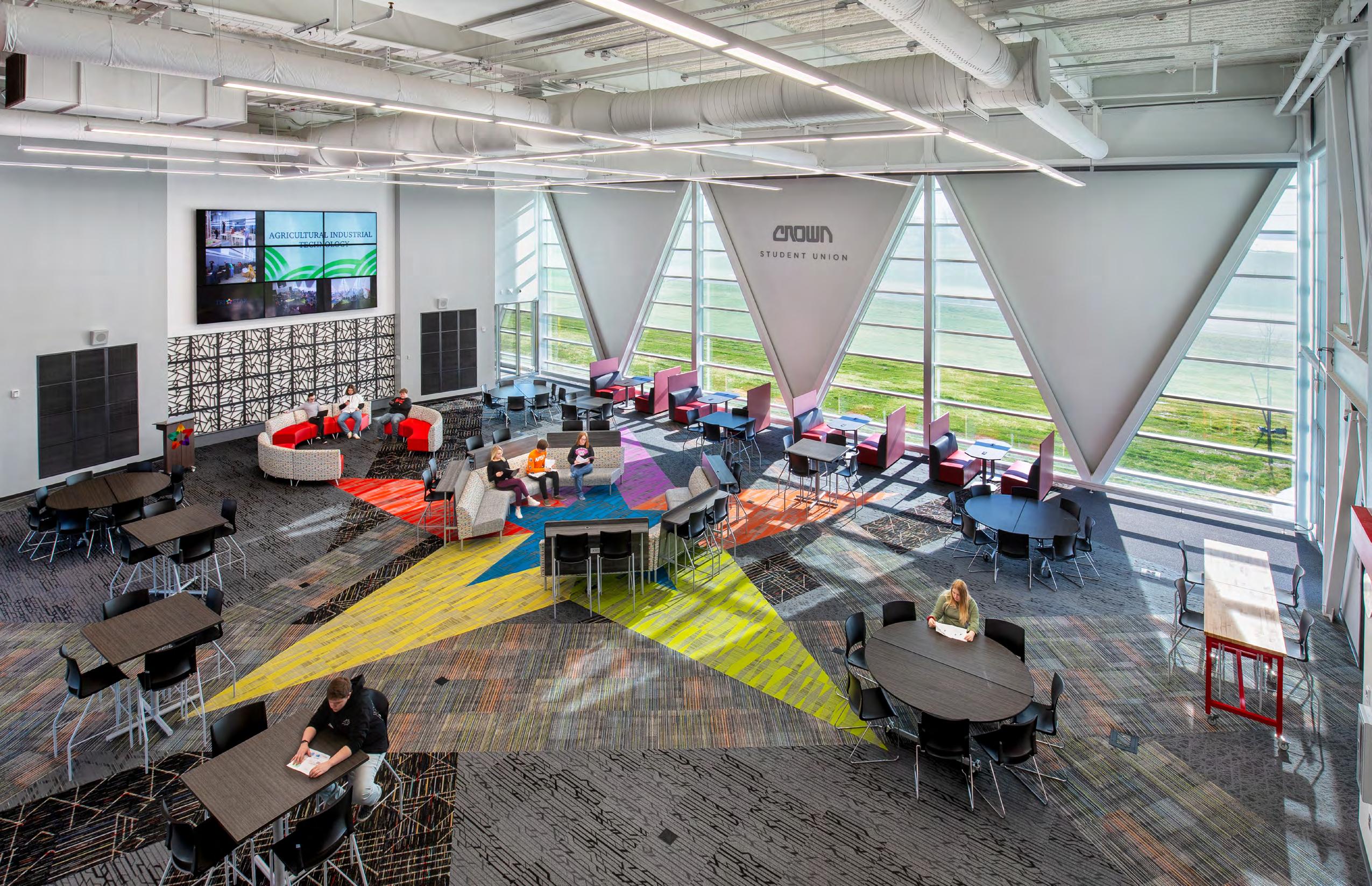
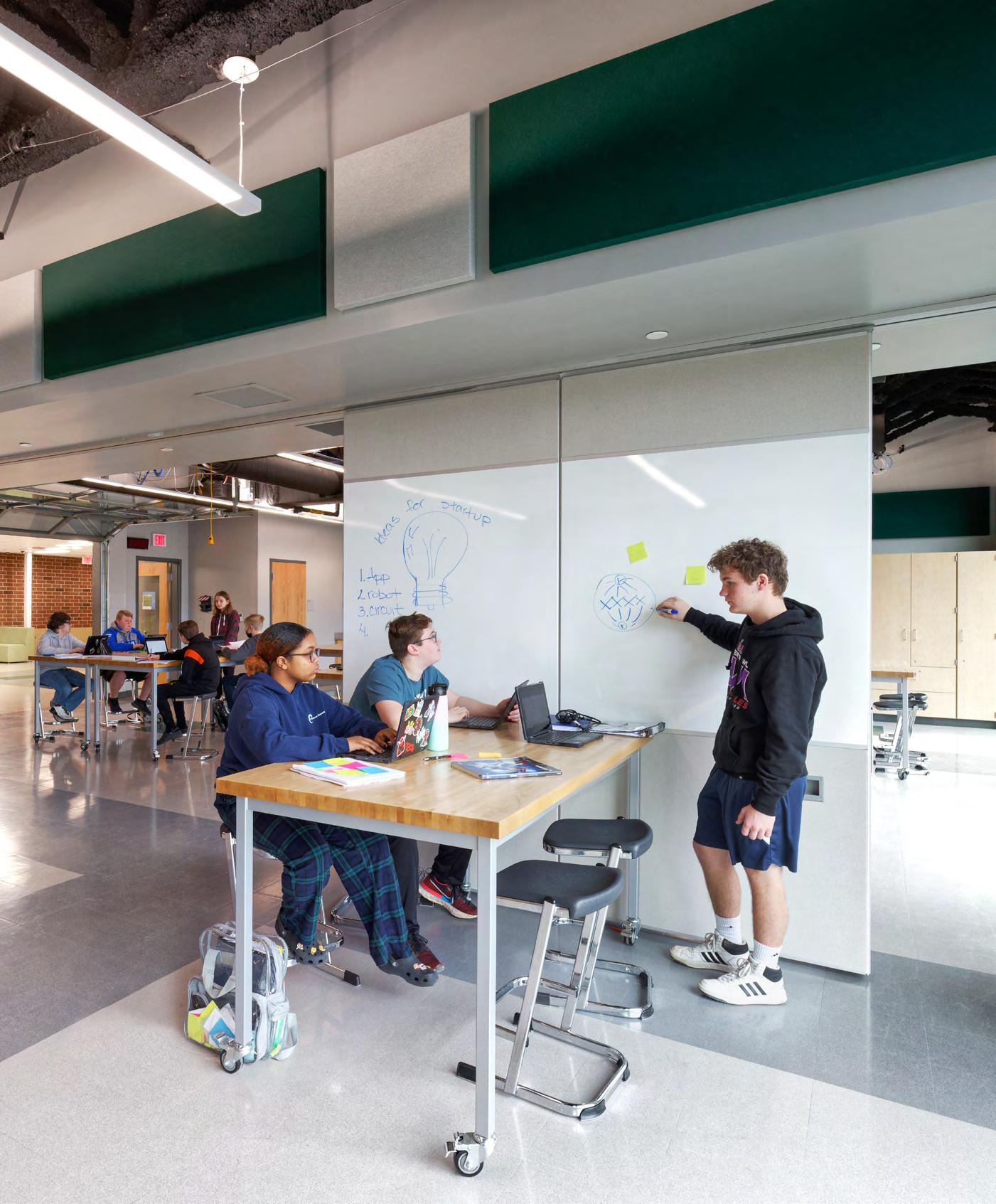
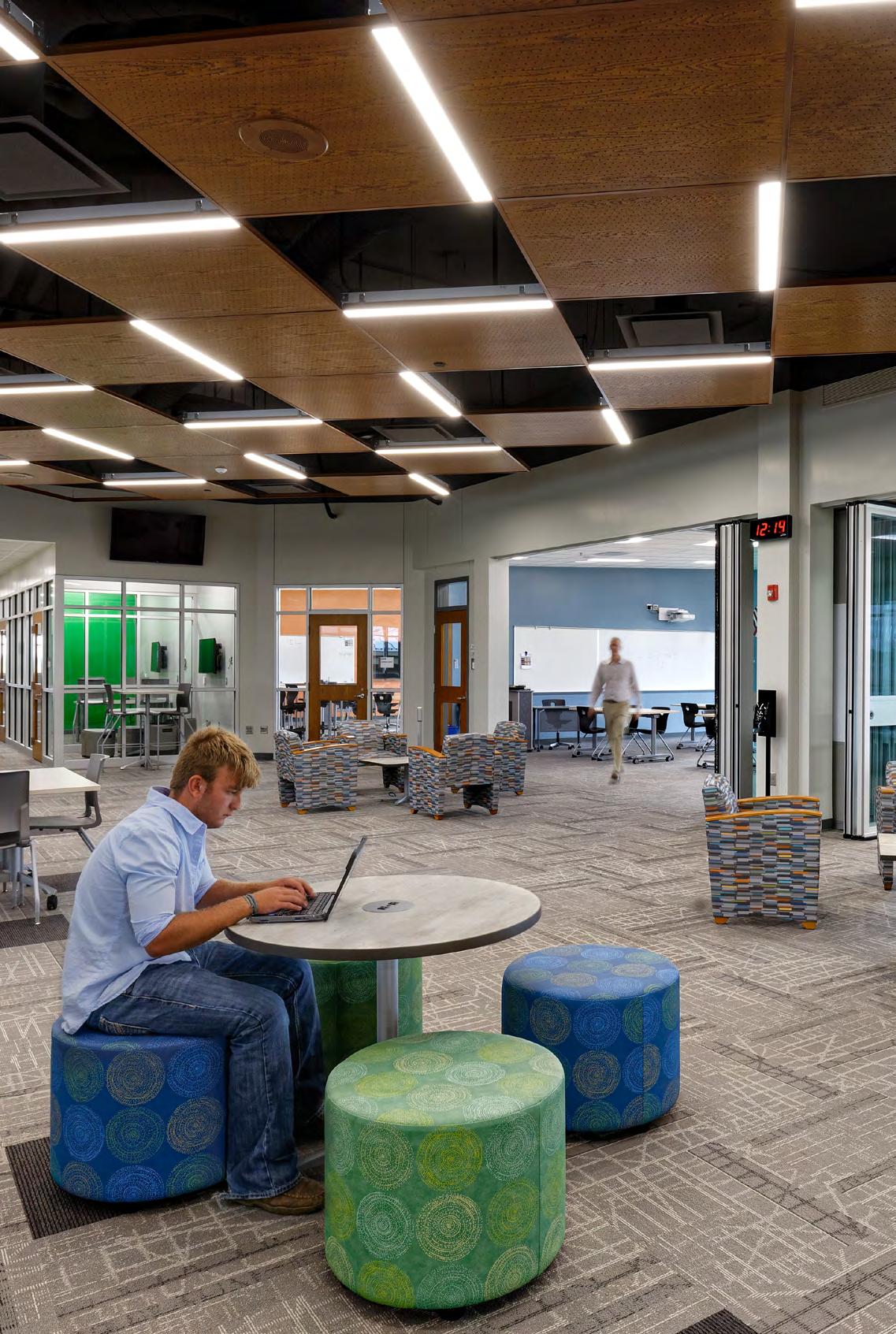
Design Implication #2 Be Intentional about Adjacencies
Connection by design: thoughtful placement creates natural collaboration.
Intentional adjacencies shape how learning happens. By deliberately positioning programs, spaces, and services in proximity to one another, we create natural opportunities for collaboration, integration, and support. Whether it’s interdisciplinary studios that blur subject boundaries, integrated art programs that amplify creativity, or embedded special education services that foster inclusion, these choices make the environment more responsive to the needs of both learners and educators. Quiet spaces tucked into clusters offer sanctuary without isolation, and adjacency becomes a tool not just for efficiency, but for equity, access, and engagement.
SPACE IMPERATIVES:
⊲ Design interdisciplinary studio space for up to 50 students for meetings, collaboration, co-teaching, presentations, and maker activities.
⊲ Strategically locate ELA, Social Studies, Math, World Language, and Science to support interdisciplinary learning.
⊲ Ensure acoustics and technology support group work and minimize disruption.
⊲ Cluster music programs together.
⊲ Integrate art and special education into academic spaces where appropriate.
⊲ Provide quiet, isolated spaces for small group and independent learning, especially for students with paraprofessional support.
⊲ Distribute media center functions throughout the building; increase book storage in ELA classrooms.
⊲ Separate community-use and extracurricular spaces to allow simultaneous events.
⊲ Design spaces to support future-ready skills like collaboration, communication, adaptability, and critical thinking.

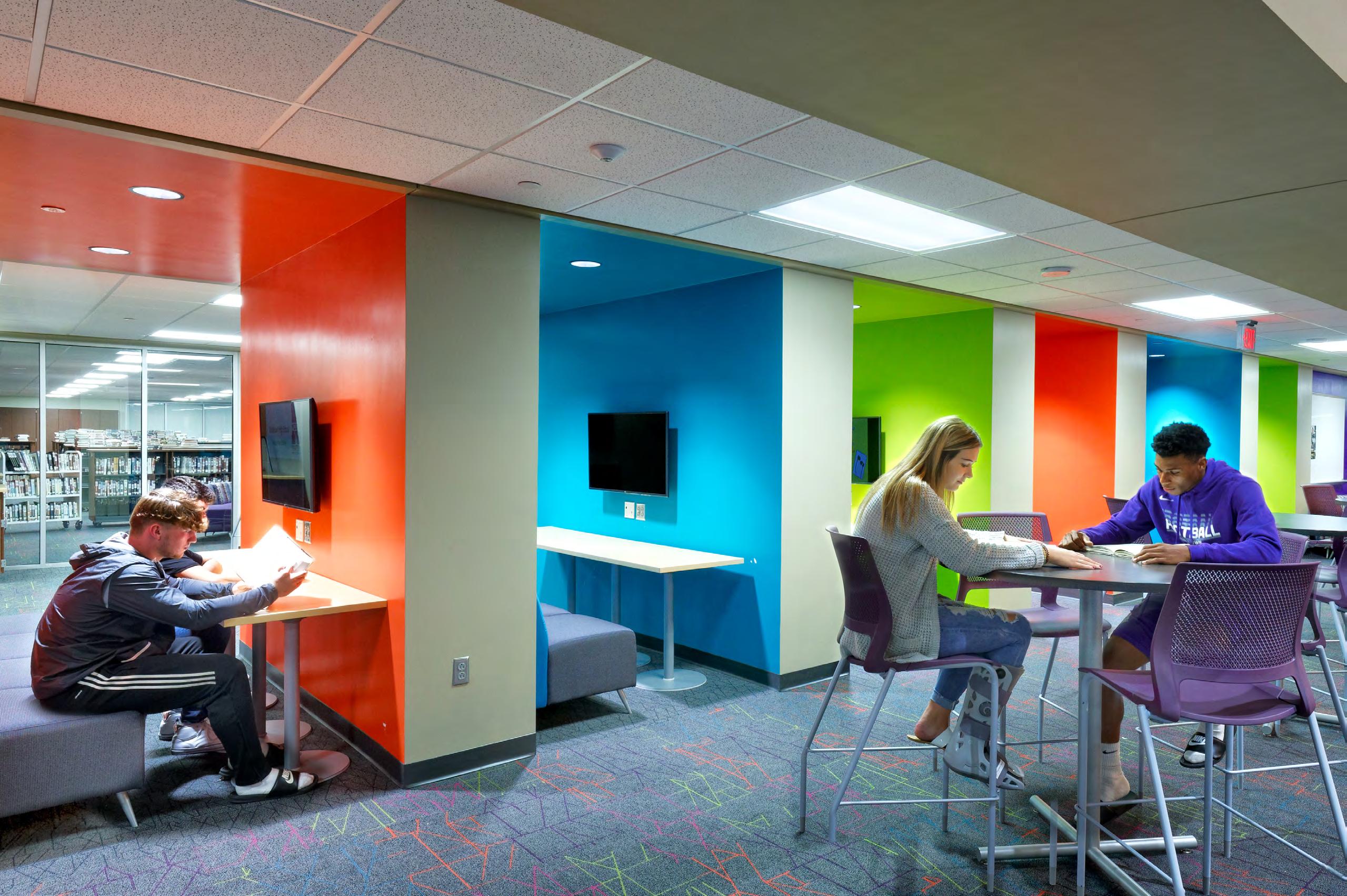
Design Implication #3 Emotional Well-being and Student Agency
Our school is about choice, care, and calm, where every learner feels they belong.
A school that supports emotional well-being and student agency becomes a place of safety, trust, and growth. Through thoughtful design students are invited to take ownership of their learning while feeling emotionally supported. By creating spaces that are inclusive, calming, and adaptable, we cultivate spaces that can foster the mindset that every adult is responsible for every student. This environment doesn’t just respond to student needs—it anticipates and honors them; fostering confidence, independence, and a sense of belonging.
SPACE IMPERATIVES:
⊲ Include quiet breakout nooks within line of sight.
⊲ Use mobile, ergonomic furniture for flexible seating.
⊲ Zone building for large group, small group, and independent learning.
⊲ Offer a mix of public and private small group spaces.
⊲ Design for independent work with clear visibility for supervision.
⊲ Apply CPTED (Crime Prevention Through Environmental Design) principles.
⊲ Create an engaging learning environment.
⊲ Provide dedicated support spaces for at-risk students.
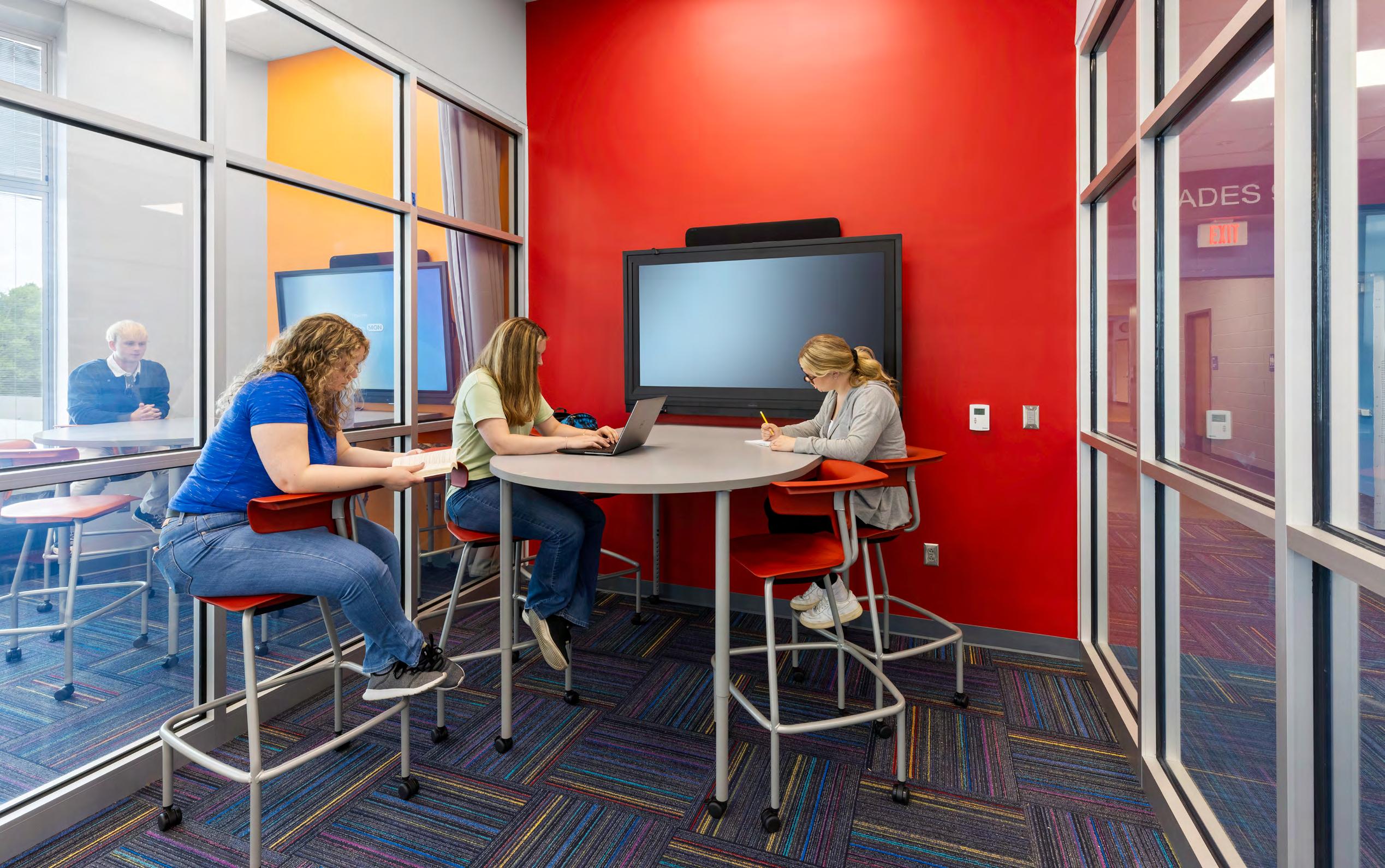

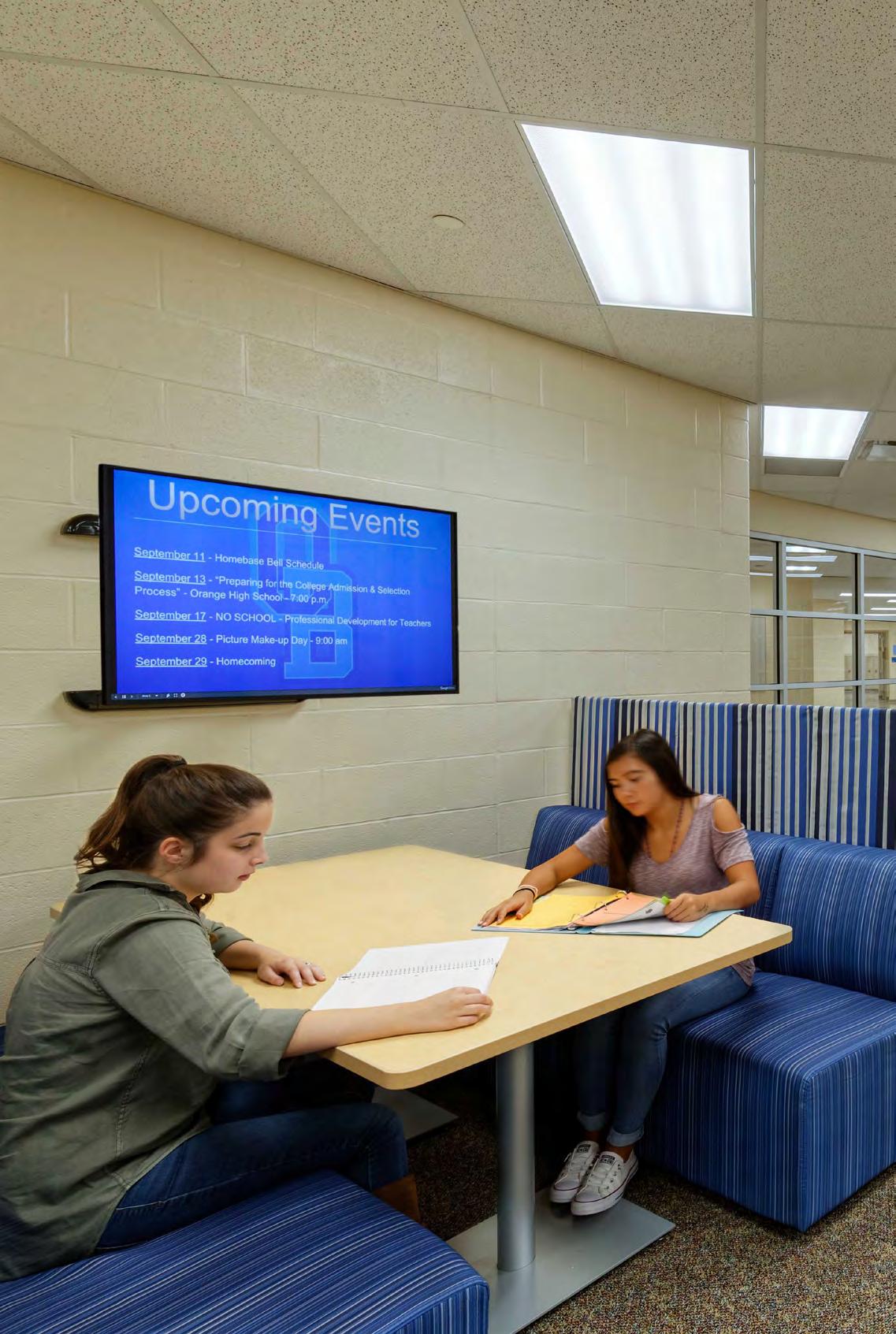
Design Implication #4 Connect to the Outdoors
In this school, learning thrives under both roofs and skies.
This ensures that nature becomes not just a backdrop, but a partner in the learning experience. Abundant natural daylight and expansive views to the outdoors in every classroom and common space support improved focus, reduced stress, and higher academic performance. Access to green space and fresh air has been shown to boost mood, increase physical and mental well-being, and foster greater attention and creativity in students. Outdoor learning zones—with shade, seating, WiFi, and power— give educators the freedom to take teaching and learning beyond the walls; creating rich, multi-sensory experiences that support all learners. The design invites students to feel grounded, inspired, and connected—to the environment and to themselves.
SPACE IMPERATIVES:
⊲ Include outdoor access in all learning and common spaces.
⊲ Ensure classrooms have views to the outdoors.
⊲ Add shaded or covered outdoor learning zones.
⊲ Provide adequate outdoor seating.
⊲ Install outdoor Wi-Fi and power access.
⊲ Furnish outdoor social and interactive areas.
⊲ Connect intentionally to Butler Tech’s outdoor environments.
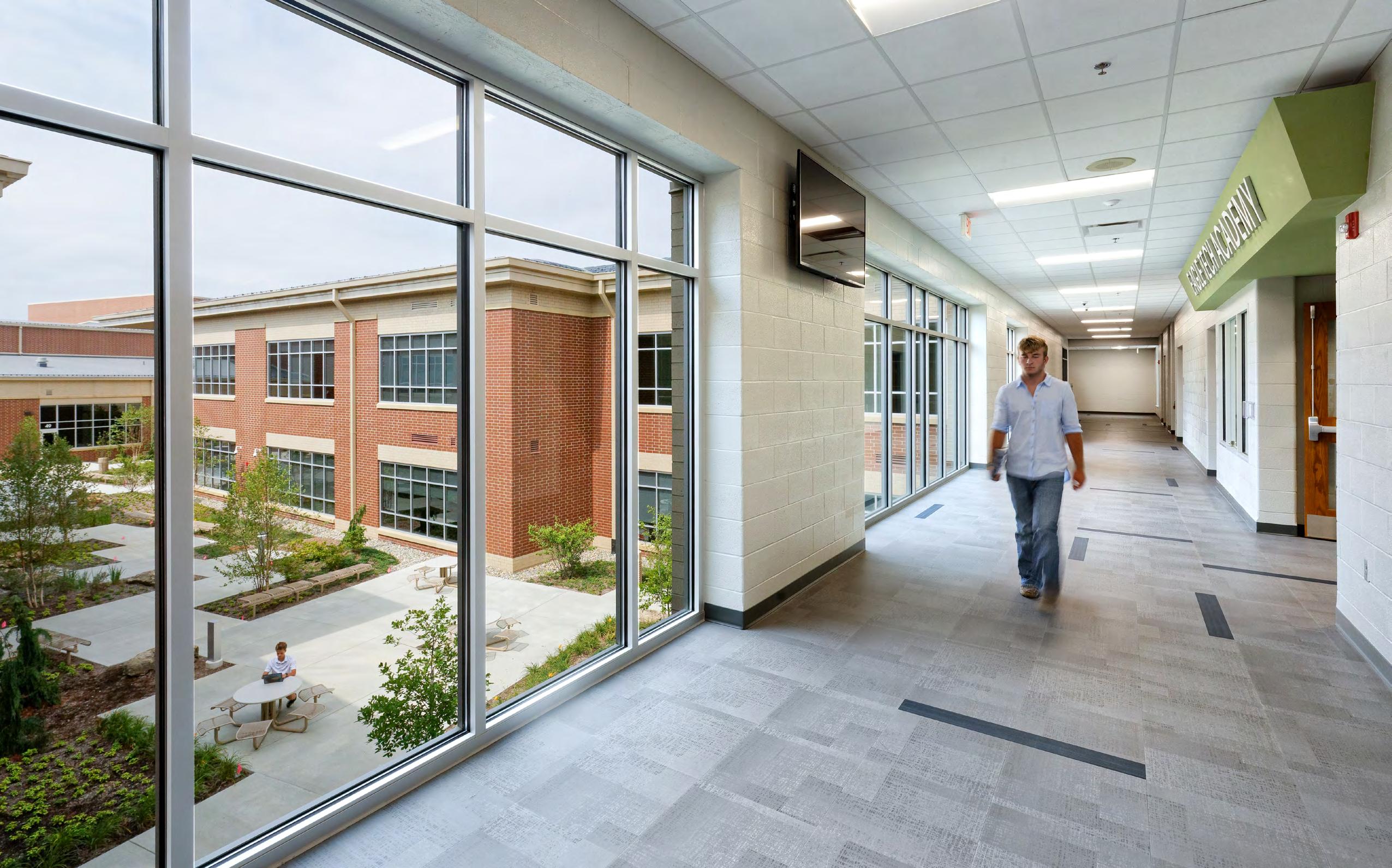
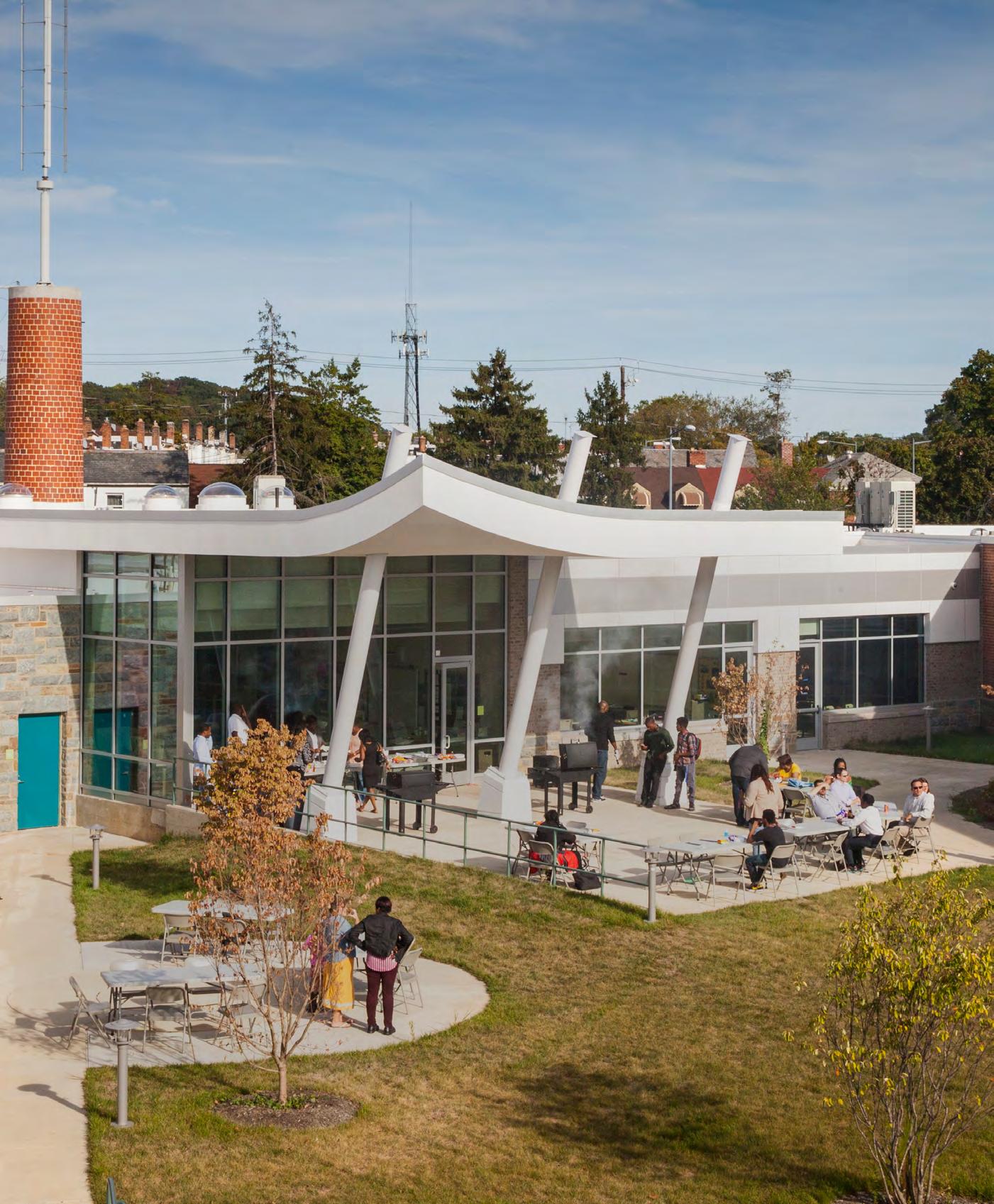

Design Implication #5 Minimize Distraction with Flexibility
Students move freely between collaboration and calm, knowing the space respects both their need for connection and concentration.
It balances the openness and flexibility essential for modern collaborative learning with the calm, focused atmosphere needed for deep thinking and personal engagement. Students and educators are able to remain visually connected to the broader learning environment without being overwhelmed by noise or visual distractions. This approach supports a range of learning activities—from quiet individual work to lively group discussions—without compromising students’ ability to concentrate. When openness is paired with intentional design, the space becomes a tool for connection, not a cause for chaos.
SPACE IMPERATIVES:
⊲ Add partial transparency between studios and adjacent spaces for supervision and natural light.
⊲ Design quiet zones with acoustic treatments and finishes.
⊲ Enclose classrooms with access to nearby collaborative areas.


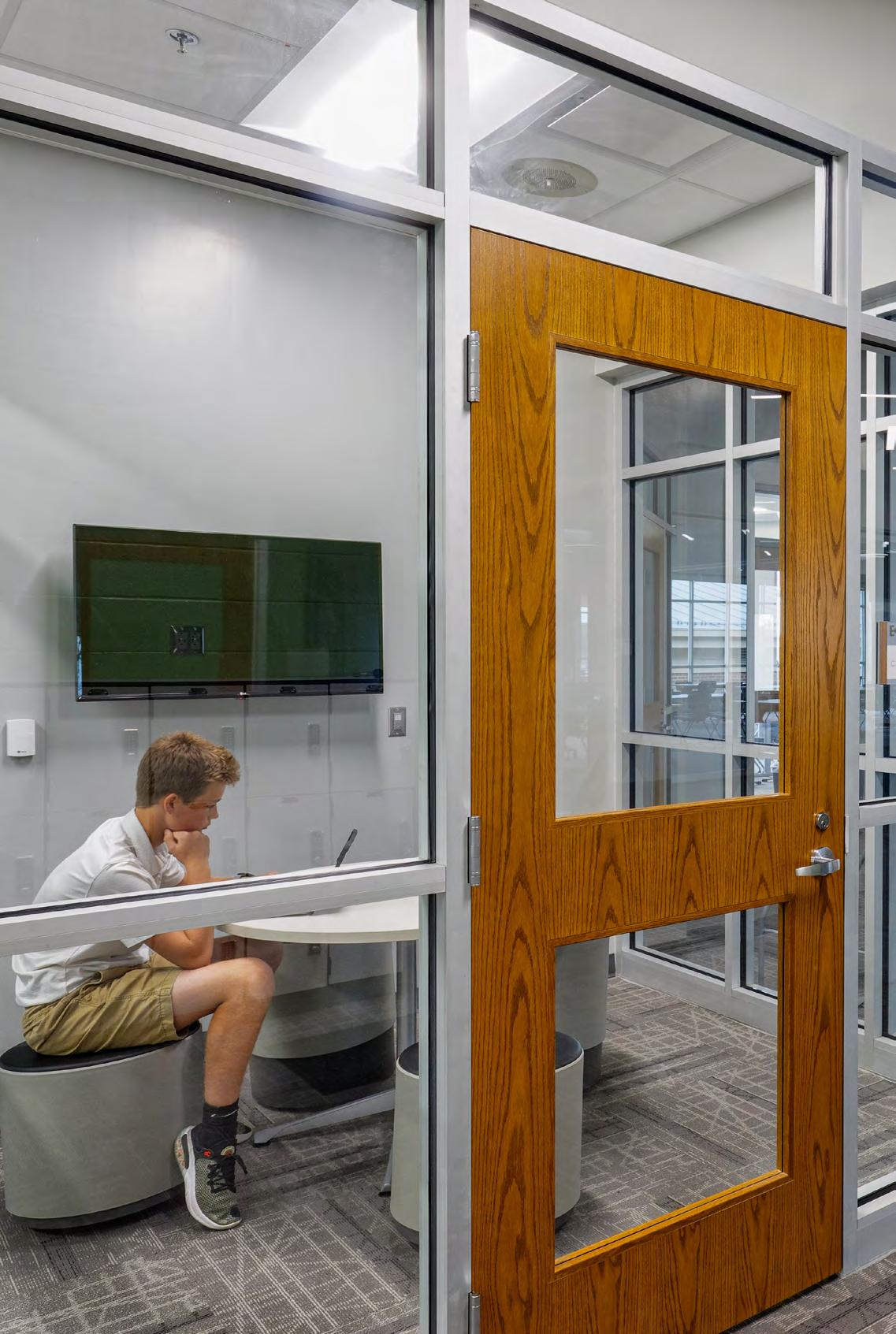
Design Implication #6
Elevate Community and School Pride
Pride lives in every hallway where identity, creativity, and community are woven into the walls.
A strong school identity builds strong students. This design celebrates community roots and school pride by embedding local culture, visual branding, and student voice throughout the environment. When thoughtfully designed, it becomes a place where students feel a deep sense of belonging and where the values of the community are reflected and celebrated. It invites students to take ownership of their environment, feel seen in their surroundings, and develop a lasting sense of connection to their school. Here, learning is visible, pride is palpable, and the school becomes a meaningful part of each student’s story.
SPACE IMPERATIVES:
⊲ Incorporate school branding (logo, colors, etc.).
⊲ Blend a high school feel with a college campus vibe.
⊲ Include space for curriculum-based work experiences (e.g., school store, café).
⊲ Provide ample display areas for 2D and 3D student work.
⊲ Use transparency to make learning visible between classrooms and collaboration areas.
⊲ Highlight and integrate Career Labs.
⊲ Equip public/event spaces with proper acoustics and PA systems.
⊲ Celebrate and showcase the “cool stuff.”
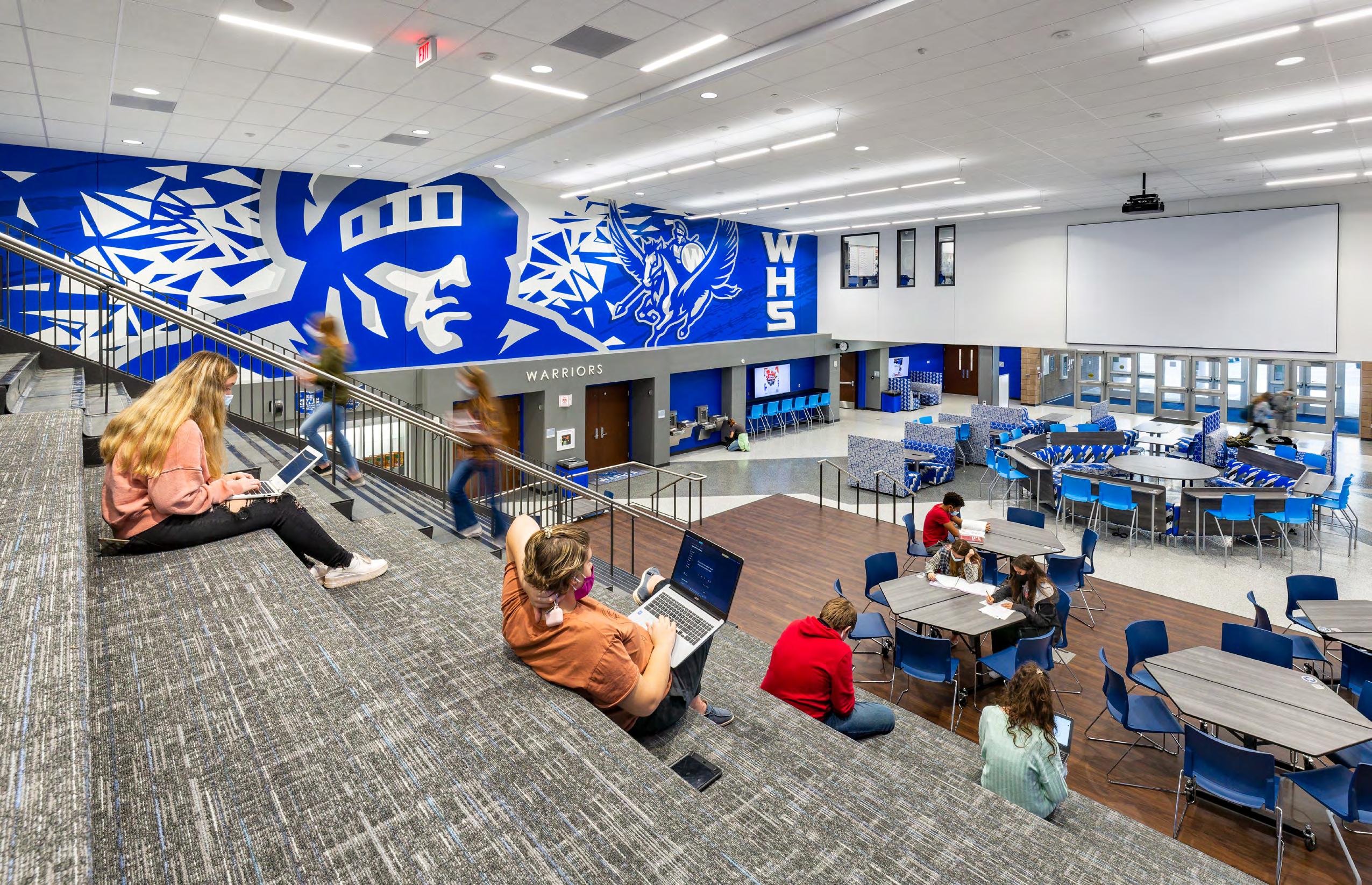
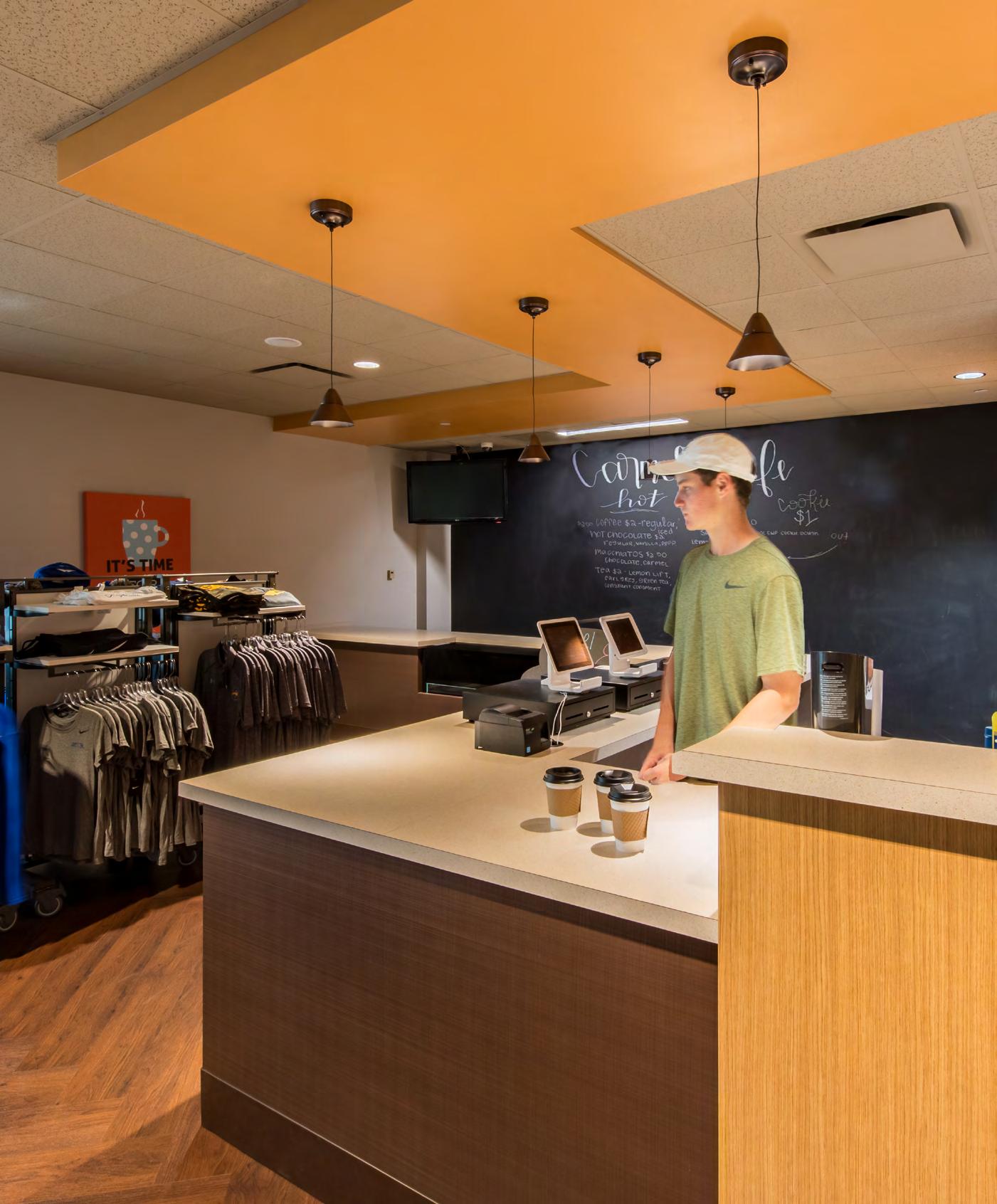
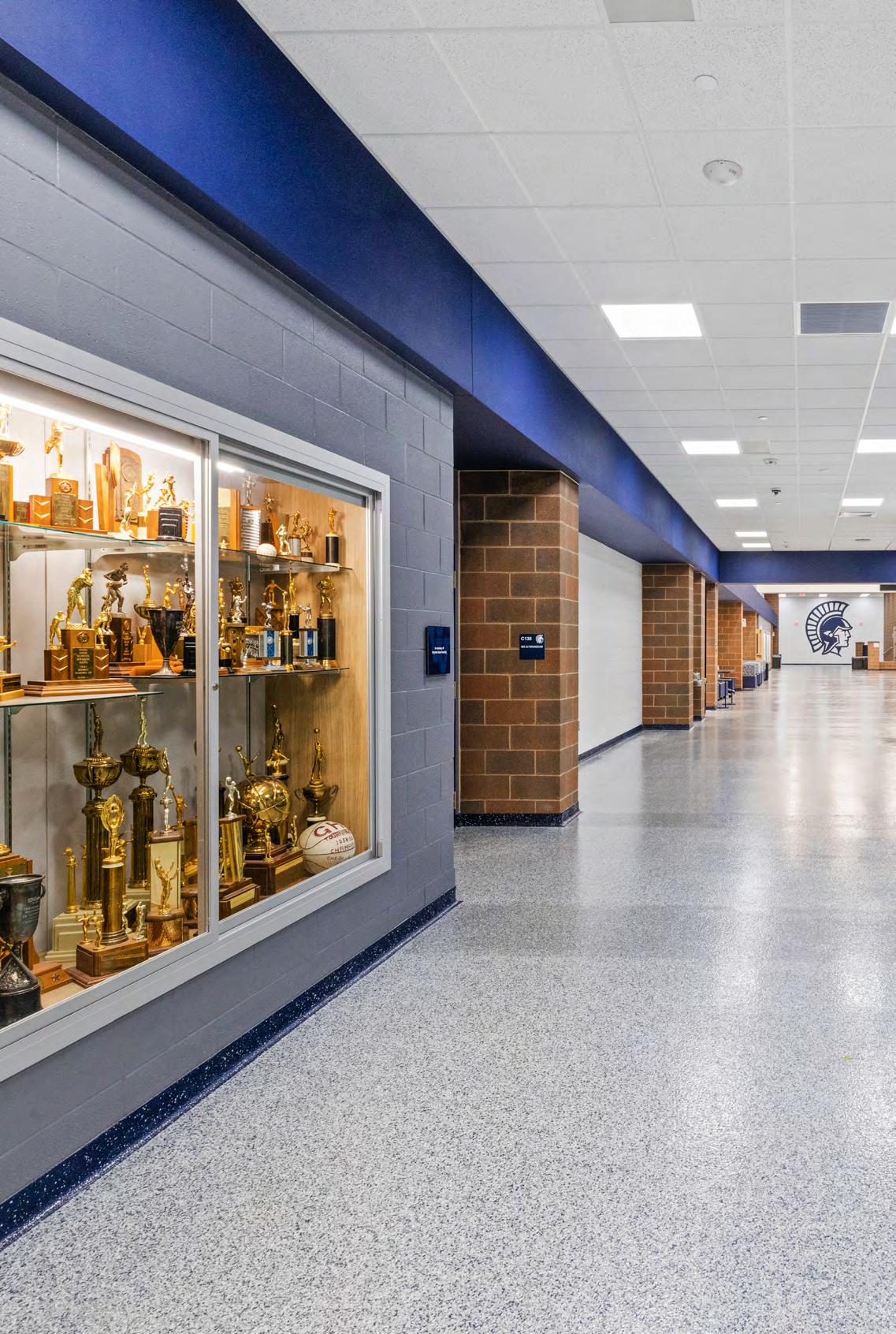
Design Implication #7 Support the Staff
A school that nurtures its staff can more effectively move toward student-centered learning and authentic experiences.
In a student-centered school, staff well-being is foundational to student success. A school designed to support its staff acknowledges that the well-being, collaboration, and professional growth of educators are vital to a thriving learning community. The district acknowledges and expects that careful consideration of spaces for adult collaboration should and will empower pedagogical experimentation. When the environment reflects respect for the work of teaching—through spaces that value connection, preparation, and reflection—it cultivates a culture where staff feel seen, supported, and empowered.
SPACE IMPERATIVES:
⊲ Place shared, tech-enabled teacher workrooms throughout the building for planning.
⊲ Design workrooms as restorative, wellness-focused spaces.
⊲ Create flexible student spaces that also appeal to adults.
⊲ Provide flexible storage near instructional areas.
⊲ Choose shared or in-classroom storage based on subject needs.
⊲ Locate counseling and admin offices near primary student and staff areas.

